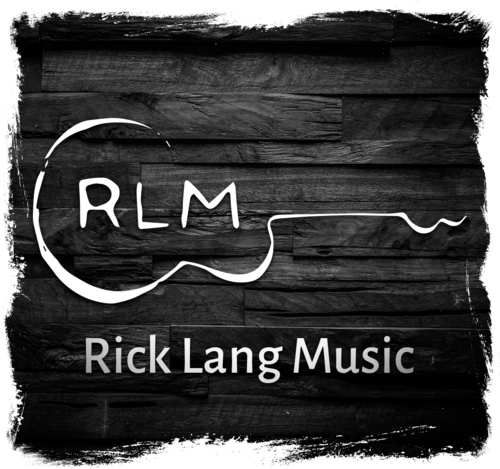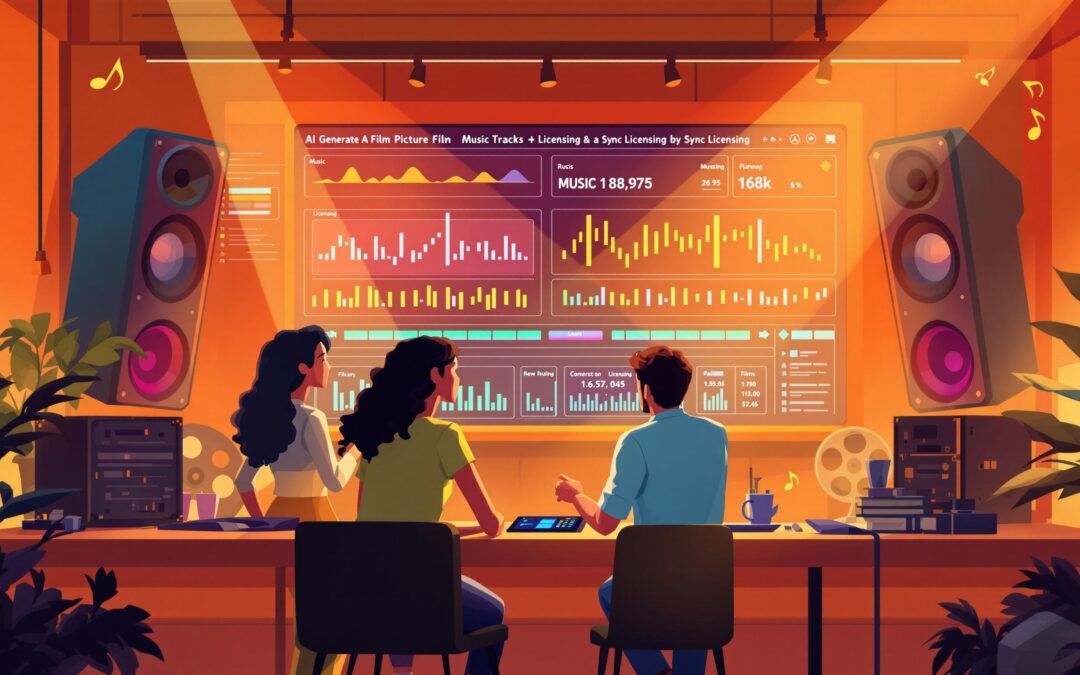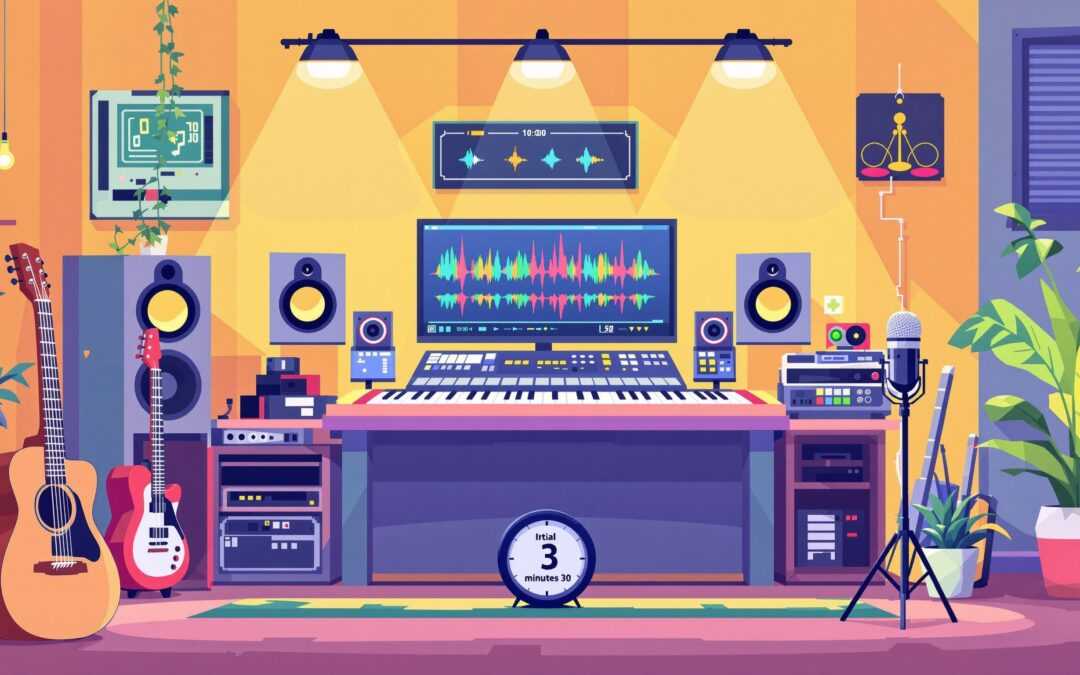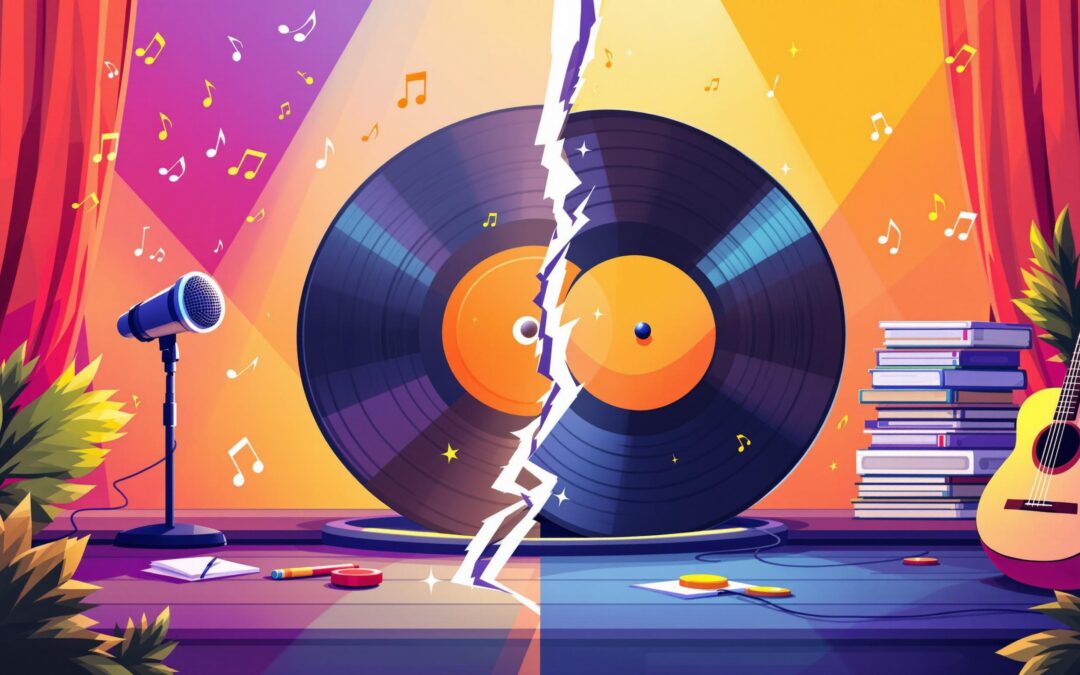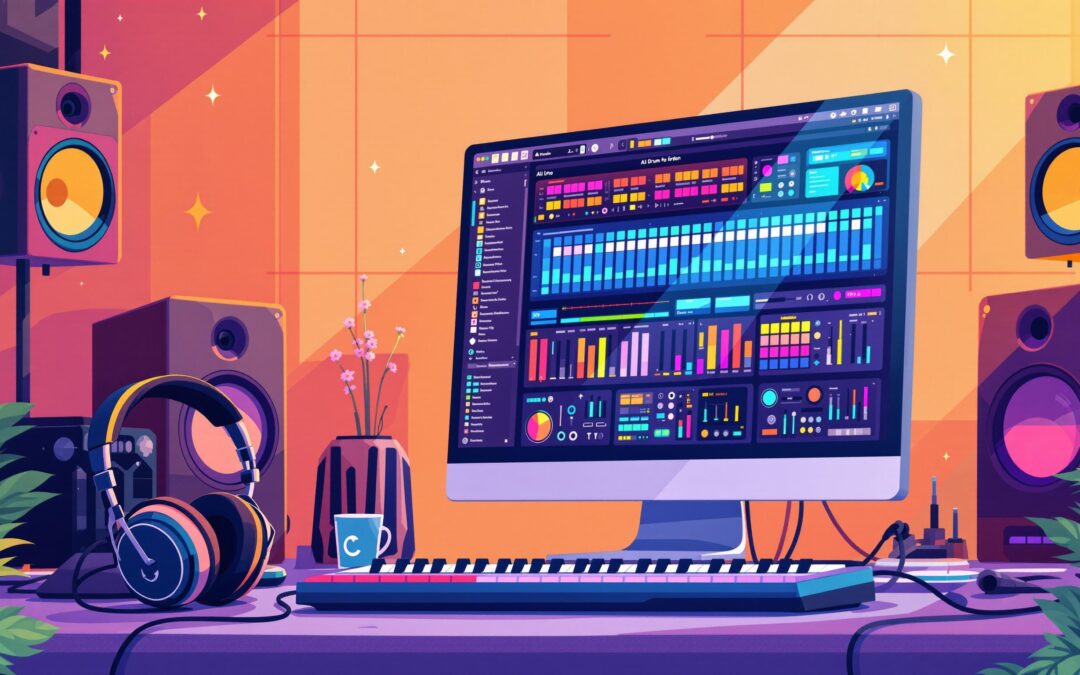A bridge is the part of a song that breaks up repetition and adds contrast to verses and choruses. It introduces new chord progressions, lyrics, or rhythms to keep the listener engaged. Follow these steps to write a strong bridge:
- Change the Music: Use contrasting chord progressions, melodies, or rhythms to stand out while fitting the song’s vibe.
- Add New Lyrics: Bring in fresh ideas or perspectives to expand the song’s story or emotion.
- Connect the Sections: Ensure smooth transitions between the bridge, verses, and choruses using shared chords or production techniques.
Great bridges like those in Taylor Swift’s "All Too Well" or Adele’s "Rumour Has It" show how they can elevate a song. Test your bridge for flow, emotional impact, and coherence, and adjust as needed. Use tools like DAWs or songwriting apps to refine your ideas.
Key Tip: Keep your bridge concise (4–8 bars) and focused to enhance the song without losing its essence.
What Makes a Song Bridge Work
Basic Bridge Definition
A bridge is a separate section in a song that breaks up the repetition of verses and choruses. While verses tell the story and choruses deliver the main hook, a bridge takes the listener somewhere new, offering a fresh twist.
This section often includes:
- New chord progressions
- Different instruments or sounds
- Changes in rhythm
- A shift in lyrical perspective
How a Bridge Shapes the Song’s Mood
The bridge plays a key role in adding emotional depth and keeping the listener hooked. By introducing contrast, it creates tension and makes the return to the chorus feel even more impactful.
A well-crafted bridge can:
- Change the key to evoke a new emotional response
- Adjust dynamics for dramatic shifts
- Add unexpected instrumental layers
- Change the narrative angle in the lyrics
Memorable Bridges in Popular Music
Some of the best-known bridges in music highlight just how transformative this section can be. Here are a few standout examples:
| Song | Artist | What Makes It Stand Out |
|---|---|---|
| "Never Be Like You" | Flume | Introduces new pad progression and string chords at 2:15, alongside fresh lyrical hooks |
| "If I Were a Boy" | Beyoncé | Shifts perspective to directly address the subject, adding emotional weight and context |
| "Rumour Has It" | Adele | Dramatically changes dynamics at 2:18, creating a moment that feels almost like a new song |
| "Drivers License" | Olivia Rodrigo | Adds a new rhythm at 2:28 with "Red lights, stop signs", changing the feel without losing the tempo |
The Beach Boys’ "Good Vibrations" is another classic example, featuring two distinct bridge sections that introduce new instruments, rhythms, and melodies. These changes build tension and excitement, making the return to the chorus even more powerful.
These examples showcase how a bridge can elevate a song – next, we’ll dive into how to craft one yourself.
How to Write a Bridge: Songwriting Tips for Lyrics, Melody, and Chords
3 Steps to Write a Bridge
Creating a bridge that stands out in your song requires thoughtful work on music, lyrics, and transitions. Here’s how you can approach it step by step.
Step 1: Change the Music
A good bridge introduces musical elements that feel different from the verses and chorus while still fitting the song’s overall vibe.
Here’s how you can tweak the music:
- Chord Progressions: Pick chords that contrast with the rest of the song but still work in the same key. For instance, if your song is in C major, starting the bridge on the relative minor (Am) can add emotional depth.
- Melodic Shifts: Adjust the melody by:
- Changing the rhythm
- Using a higher or lower pitch range
- Altering the length of phrases
"The bridge is one of my favorite parts to write; it’s the perfect place to step away from the familiar main idea and help highlight the last chorus of the song." – Tero Potila, Professional Music Composer and Producer
Once you’ve got the music down, it’s time to bring in fresh lyrics.
Step 2: Add New Lyrics
The bridge is your chance to introduce new lyrical ideas that expand on the song’s story or emotion. Here are some ways to do it:
| Perspective | Example Starter | Purpose |
|---|---|---|
| Future Focus | "Someday…" | Adds a sense of hope or growth |
| Contrast | "Even though…" | Highlights conflict or tension |
| Transformation | "I used to be…" | Shows personal change |
Take Taylor Swift’s "All Too Well" as an example. The bridge lyrics "Maybe we got lost in translation, maybe I asked for too much / But maybe this thing was a masterpiece ’til you tore it all up" introduce a fresh perspective, adding emotional weight to the song.
Step 3: Connect the Sections
A seamless transition between the bridge and other parts of the song is key to maintaining flow. Here’s how to make it work:
-
Musical Techniques:
- Use shared chords to link sections.
- Incorporate recurring melodic patterns.
- Gradually adjust intensity to ease the shift.
-
Production Tricks:
- Build up with crescendos.
- Use filter sweeps for smoother transitions.
- Add pauses for dramatic effect.
The Beach Boys’ "Good Vibrations" is a great example, blending different instruments and rhythms while keeping the bridge connected to the rest of the song. Similarly, Michael Jackson’s "Billie Jean" uses strings and a sustained tonic note to shift the mood without losing the song’s core identity.
sbb-itb-1c6af30
Make Your Bridge Better
Test Your Bridge
Testing your bridge is crucial to ensure it fits your song without disrupting its flow. Use this table to evaluate key areas:
| Test Area | What to Check | Success Indicators |
|---|---|---|
| Musical Contrast | Chord progression changes | Adds interest while avoiding abrupt shifts |
| Emotional Impact | Mood and energy shifts | Deepens the song while staying cohesive |
| Story Development | Lyrical progression | Moves the narrative forward or adds a new angle |
| Technical Flow | Transitions and timing | Smoothly connects sections of the song |
Focus on these elements during your review:
- Energy Flow: Does the bridge add tension or offer relief where needed?
- Musical Balance: Are new instruments or chord changes enhancing the song without clashing?
- Lyrical Coherence: Do the new lyrics contribute to the story without causing confusion?
If something feels off, don’t worry – there are ways to fix common issues.
Fix Common Bridge Problems
Once you’ve tested your bridge, tackle any problems that arise:
Problem: The bridge feels disconnected.
- Solution: Try using shared chords or melodic motifs from the verse or chorus to tie sections together.
- Example: The Beatles’ "A Day in the Life" uses masterful chord progressions and melodies to link contrasting sections.
Problem: The bridge lacks impact.
- Solution: Play with key changes, adjust dynamics, add new instruments, or switch up the rhythm to create a stronger emotional pull.
Problem: The bridge drags on too long.
- Solution: Keep it short and to the point – 4 to 8 bars is often enough.
For best results, consider tweaking multiple aspects at once to create a more polished and engaging bridge.
Songwriting Tools and Help
Today’s tools can elevate your song’s bridge, helping you fine-tune its unique elements and bring your ideas to life.
Digital Audio Workstations (DAWs)
DAWs are essential for turning your musical ideas into reality. Here’s a quick look at some popular options:
| DAW Type | Best For | Key Features |
|---|---|---|
| Soundtrap | Beginners | Browser-based, easy to set up, supports collaboration |
| Logic Pro | Professionals | Advanced MIDI editing, huge sound library |
| Ableton Live | Electronic music | Real-time performance, loop-based composition |
Mobile Apps and Quick Tools
Capture your bridge ideas on the go with these handy tools:
- Voice Memos: Perfect for recording melodies and harmonies anytime, anywhere.
- Google Docs/Apple Notes: Jot down lyrics, chord progressions, and ideas quickly.
- Rhyme Zone: Find rhymes to fine-tune your bridge lyrics.
- HumOn: Turn hummed melodies into musical scores effortlessly.
Advanced Songwriting Resources
For deeper insights, try Hook Theory Trends to study effective chord progressions. If you’re looking to experiment, Suno AI’s "Replace Sections" feature (available with its Pro Plan for $8/month) can help you rework bridge sections with ease.
"The whole point of using any tools in your writing process is to help you be more creative, not hand over your creativity to a tool."
Write.Record.Release.
Write.Record.Release. provides a full suite of tools and services to support your songwriting journey, including:
- AI-powered songwriting tools
- Strategies for co-writing
- Guidance on publishing your work
- Distribution through platforms like CDBaby
Collaboration Platforms
Platforms like LANDR offer private sharing options, enabling you to get feedback on your bridge from collaborators. This feedback can lead to stronger arrangements and fresh ideas for your music.
Conclusion: Build Strong Bridges
Writing bridges that work requires both technical skill and a creative touch. Together, these elements help emphasize the high point of your song.
Here are some important tips to keep in mind when crafting your bridge:
- Musical Contrast: Play around with key changes, shifts in tempo, or dynamic adjustments to introduce tension and variety.
- Lyrical Depth: Use this section to bring in fresh perspectives or emotions that add to the story you’re telling.
- Structural Balance: Make sure your bridge flows naturally between verses and choruses, keeping the song cohesive and engaging.
To master bridge-writing, blend classic techniques with modern tools. While digital audio workstations (DAWs) and songwriting apps can make things easier, honing your instincts through regular practice is essential. Challenge yourself by writing bridges for songs you love or team up with other songwriters to gain new insights.
Many iconic tracks show how a well-crafted bridge can add depth and impact to a song. Whether you’re just starting out or have been writing for years, remember that this skill grows with practice and a willingness to try new ideas. Experiment with different styles, push your boundaries, and refine your craft to create bridges that truly resonate with your audience.

